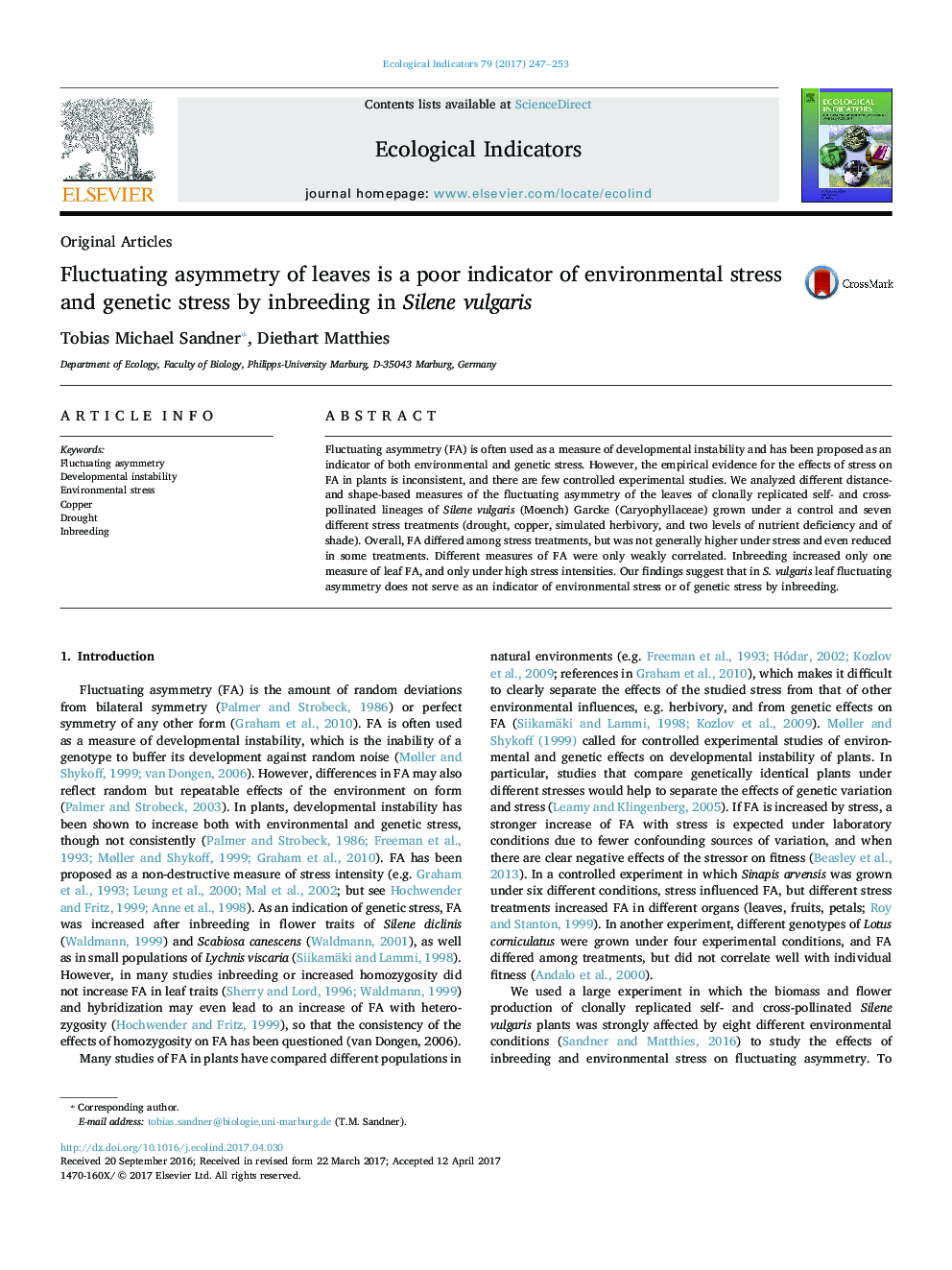| کد مقاله | کد نشریه | سال انتشار | مقاله انگلیسی | نسخه تمام متن |
|---|---|---|---|---|
| 5741771 | 1617123 | 2017 | 7 صفحه PDF | دانلود رایگان |

- Fluctuating asymmetry (FA) was measured in an experiment with cloned plant material.
- Seven different stresses and inbreeding did not consistently increase FA.
- Various distance- and shape-based measures of FA were only weakly correlated.
- FA of leaf traits may not be a good indicator of environmental and genetic stress.
Fluctuating asymmetry (FA) is often used as a measure of developmental instability and has been proposed as an indicator of both environmental and genetic stress. However, the empirical evidence for the effects of stress on FA in plants is inconsistent, and there are few controlled experimental studies. We analyzed different distance- and shape-based measures of the fluctuating asymmetry of the leaves of clonally replicated self- and cross-pollinated lineages of Silene vulgaris (Moench) Garcke (Caryophyllaceae) grown under a control and seven different stress treatments (drought, copper, simulated herbivory, and two levels of nutrient deficiency and of shade). Overall, FA differed among stress treatments, but was not generally higher under stress and even reduced in some treatments. Different measures of FA were only weakly correlated. Inbreeding increased only one measure of leaf FA, and only under high stress intensities. Our findings suggest that in S. vulgaris leaf fluctuating asymmetry does not serve as an indicator of environmental stress or of genetic stress by inbreeding.
Journal: Ecological Indicators - Volume 79, August 2017, Pages 247-253